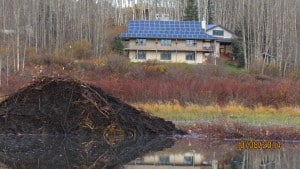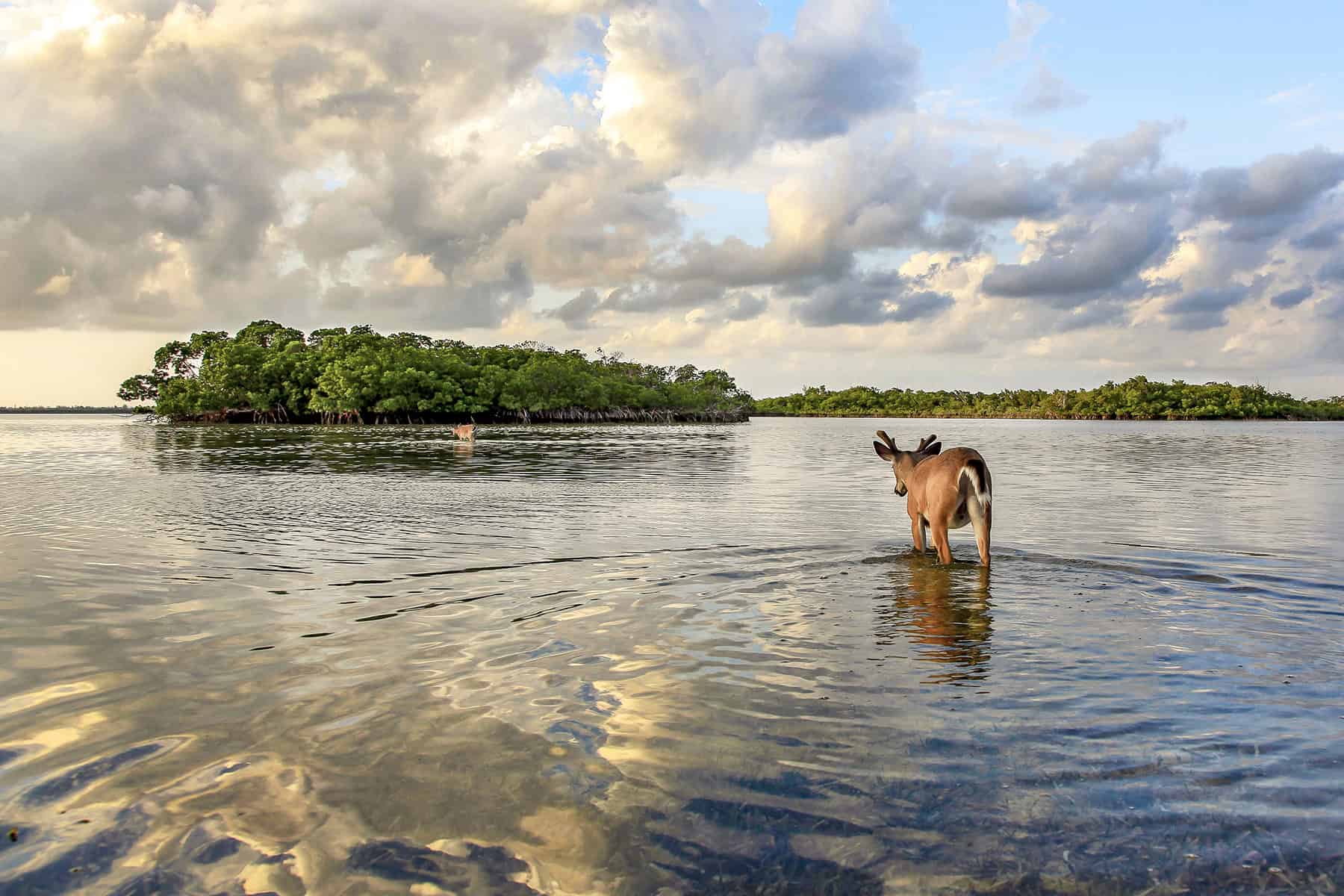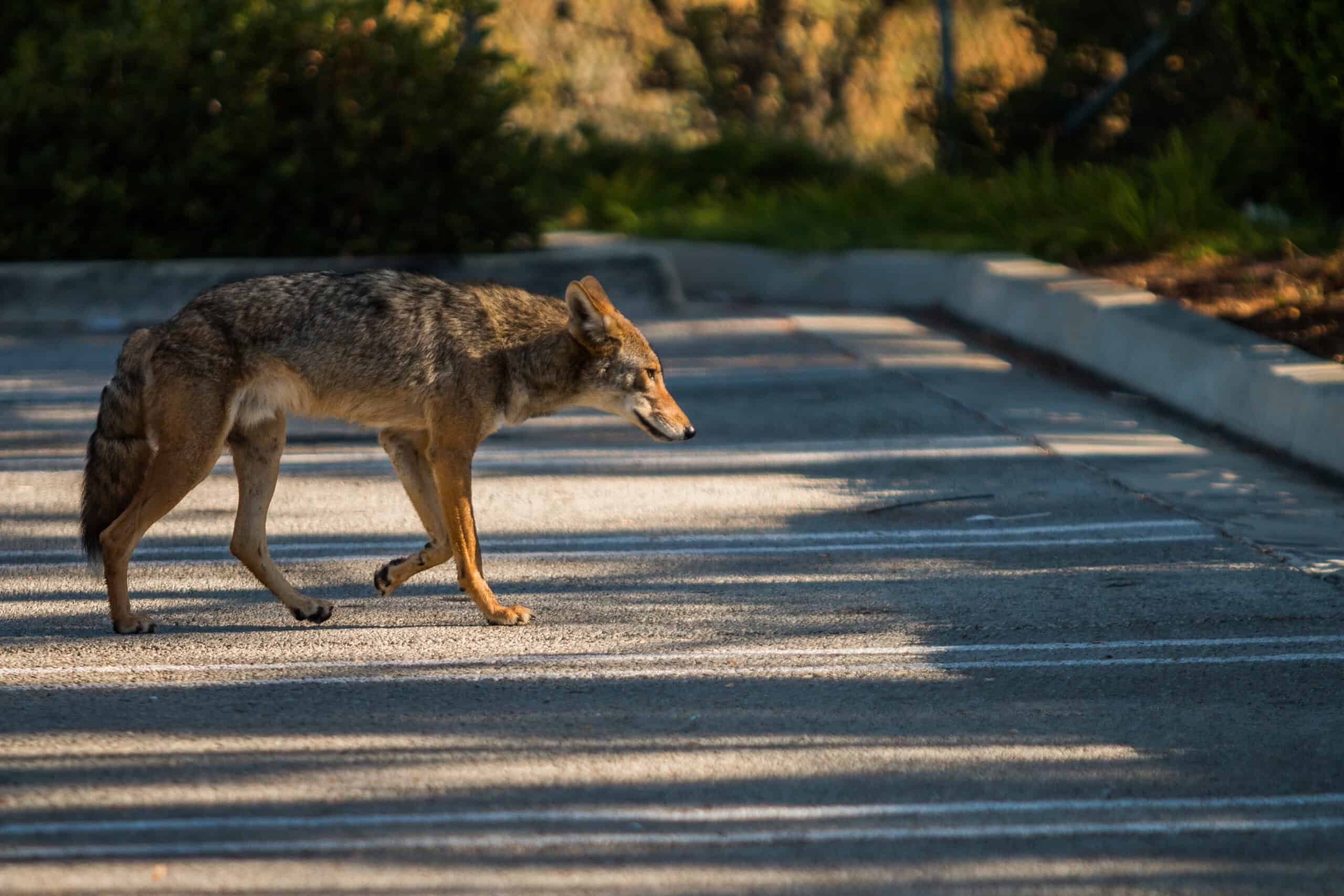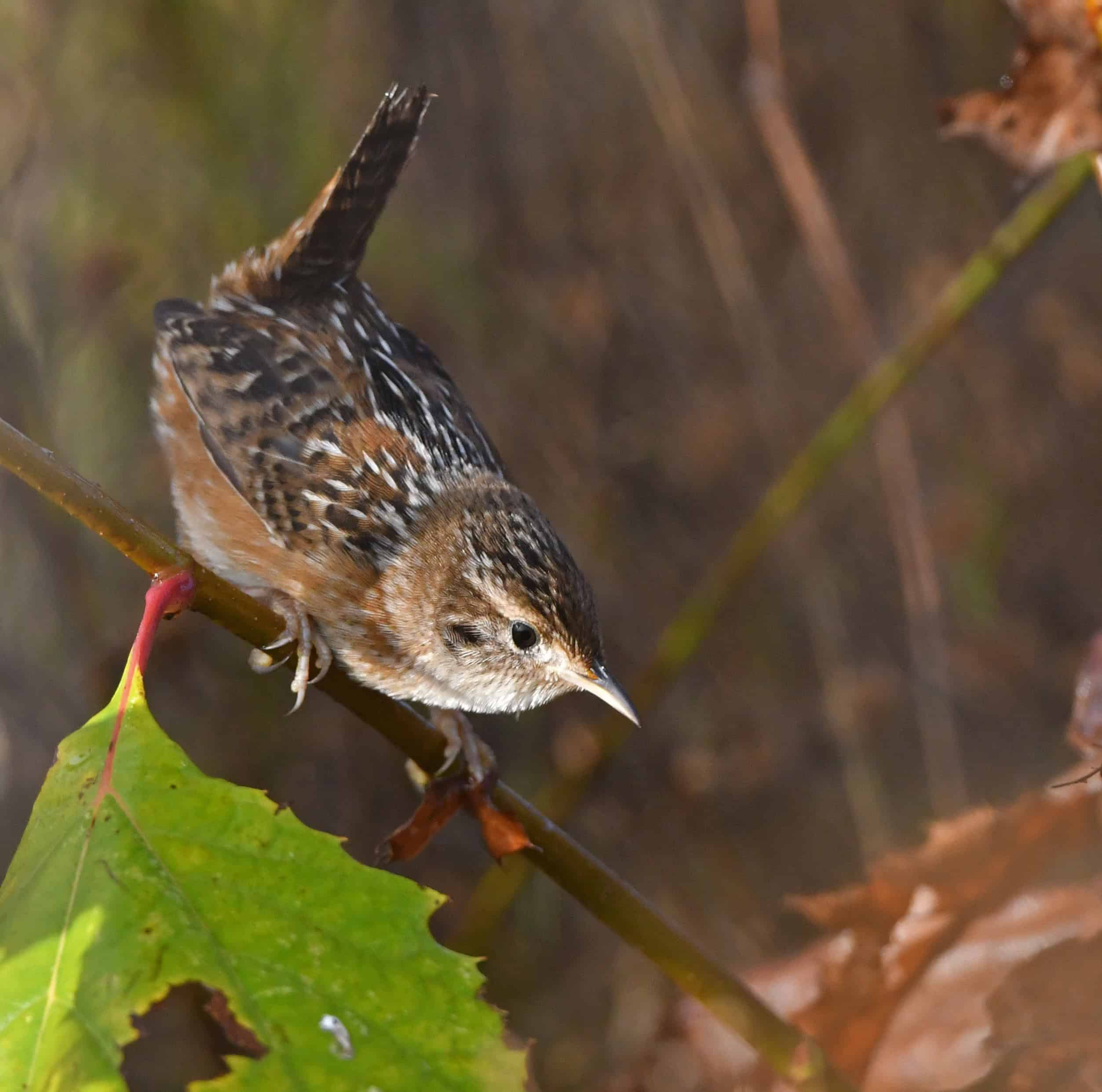Share this article
Monitoring Beaver Restoration One Dam at a Time
It’s been about four years since Pierre Bolduc invited a new squatter to live on his land, and he couldn’t be more pleased with the results. Looking out the window one morning last week, he spotted five moose (Alces alces) in his backyard.
“Those moose didn’t use to be here before. Maybe in a blue moon,” Bolduc said.
But while Bolduc is happy to see them, the moose aren’t the squatters he brought in. Frustrated over his inability to build a decent hockey rink for his children in his backyard outside of Bragg Creek, Alta. around 25 miles southwest of Calgary, Bolduc needed architectural experts.
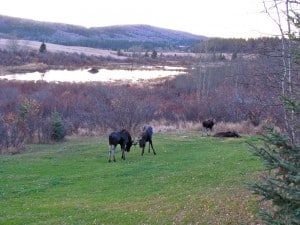
A group of moose in Pierre Bolduc’s backyard, with the beaver pond in the backyard. Image Credit: Pierre Bolduc
“We ended up adopting a family of beavers, a small family of three,” he said. “There’s nothing like hiring a professional team to do the job right.”
After moving in, he focused their attention where he wanted them to build a dam and create a pond by setting up speakers that played the sound of running water there.
“It does something to the psyche of a beaver. They tend to build the dam right at the place where they can hear the water,” Bolduc said, adding that to stop them from taking down trees he wants to keep, he feeds them unwanted poplar he cleared from around the local dirt road.
To get the beavers (Castor canadensis) wasn’t necessarily straight forward, and perhaps not even completely legal, though. Bolduc phoned up a local trapper that removes beavers from properties and told him he’d take a few.
While Bolduc’s do-it-yourself watershed restoration was met with relative success, the episode illustrates a gap in the regulatory system of the Alberta Government toward beaver management. At the 2015 Conference of The Wildlife Society in Winnipeg this month, Erin Specht, a recent University of Alberta-Augustana graduate, spoke in a session about some of these shortcomings.
“There’s a need for laws around beavers,” she said.
Trappers can get licenses for removing beavers from some properties, where they can cause angst to farmers or other landowners by tampering with the water systems or taking down trees. These beavers are often euthanized.
But Specht said there is also a lot of uncertainty on when, where and if you can release beavers and regulations and rules about this may be necessary in certain cases in which they could cause damage to human infrastructure or local ecosystems through their landscape architecting. No permits are currently required right now for installing pipes, or water-control devices to keep water flowing in some areas by bypassing beaver dams and reducing flooding.
“We’re really good at dealing with dead beavers but we’re not good at dealing with live ones,” she said of Alberta. “Even rehab centers don’t have standards for the release of beavers.”
She listed Washington and Oregon as U.S. states with specific regulations for beaver relocation while others even have programs that match landowners who want to get rid of beavers with others who would like to adopt them — “kind of a dating site for beavers.”
Beaver Trails
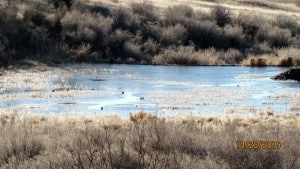
Beavers and muskrats dot the ice around a pond behind Pierre Bolduc’s house near Bragg Creek, Alta. Image Credit: Pierre Bolduc
Bolduc’s story doesn’t end with a happy beaver family, unfortunately. In an illustration of one of the possible problems that can come with adopting beavers without regulations specifying how and under what conditions they can be moved and adopted, he decided at one point to bring in another “good-looking” beaver that would “fall in love” with the other beavers and increase the beaver presence in the valley where he lives.
Beavers have a high ability to disperse — at between one and three years of age they move an average of 15 miles away from their home dens, according to Steve Windels, a wildlife biologist with Voyageurs National Park in Minnesota. TWS member Windels presented his work on beaver dispersal during the Winnipeg conference as well, through gathering information on around 700 marked and tagged individuals — of which 203 were caught two or more times during the eight-year study period. He found that beavers were most comfortable moving through lake systems during dispersal, followed by streams. But mortality is high during this dispersal, partly due to predators like bears, and sometimes due to other beavers.
“Beavers are very territorial. They like to beat the snot out of each other,” Windels said.
Bolduc’s idea of leaving it to an outside beaver to increase the family unit came to a rude wakeup call likely due to the different smell it exuded.
“We ended up having World War III over that one,” Bolduc said, meaning the original beavers he’d brought in killed the new one.
For Bolduc, who has helped restore a wetland habitat behind his property that now brings in moose and muskrats, the episode taught him a vital lesson that could have been avoided with better defined provincial regulations on beaver releases: “You can help nature but you cannot force it.”
Specht said that with better regulations, provincial agencies and even companies could make better use of beavers to help restore the wetland habitat required as compensation for development. In fact, some research has already been done on predicting beaver density.
But regardless of the territorial strife that occurred, the beaver population in Bolduc’s backyard is still growing.
“At last count, which happens to be about five weeks ago, I saw seven at one time,” he said. “Mister Beaver has been a very busy fellow and I suspect they will need to divide the family up the valley by next spring.”
But he isn’t content to leave it to the beaver. He is already planning to set up the car stereo sound system and drag in material for them to build their dam with. “I will give them direction as to where to build the next dam,” he said.
Header Image: Maclean Creek pond Bragg creek Calgary. Image Credit: davebloggs007, licensed by cc 2.0





